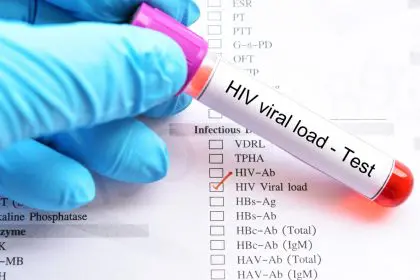For millions of Americans, bathroom trips bring anxiety rather than relief. Irritable bowel syndrome with constipation (IBS-C) impacts approximately one-third of all IBS cases, causing physical discomfort and emotional distress that can disrupt daily life. Despite its prevalence, many people struggle to understand this condition or find effective management strategies.
What exactly is IBS-C?
Irritable bowel syndrome with constipation represents one specific type of IBS, characterized primarily by infrequent and difficult bowel movements. While occasional constipation affects most people at some point, IBS-C involves a chronic pattern of digestive symptoms that persist over months or years.
The key distinction of IBS-C compared to other forms of IBS is the predominance of constipation rather than diarrhea or alternating patterns. People with this condition typically have fewer than three bowel movements per week, often accompanied by straining, hard stools, and feelings of incomplete evacuation.
Unlike some digestive disorders, IBS-C doesn’t cause damage to the intestinal tract or increase risks for more serious conditions. However, its impact on quality of life shouldn’t be underestimated, as symptoms can affect everything from work productivity to social activities.
The telltale signs that distinguish IBS-C
Understanding the specific symptoms of IBS-C helps differentiate it from other digestive issues. The hallmark indicators include:
Abdominal pain or discomfort that typically improves after bowel movements
Bloating and visible abdominal distension that often worsens throughout the day
Infrequent bowel movements – typically fewer than three per week
Hard, lumpy stools that require straining to pass
Sensations of incomplete emptying after using the bathroom
Excessive gas and related discomfort
These symptoms often follow a chronic course with periods of improvement and worsening rather than completely resolving. Many people notice certain triggers that predict symptom flares, such as specific foods, stress, or hormonal changes.
What makes diagnosis challenging is the overlap with other conditions like celiac disease, inflammatory bowel disease, or even colorectal cancer. This similarity in presentation makes proper medical evaluation essential rather than self-diagnosis.
The mysterious origins of IBS-C
Despite extensive research, scientists haven’t identified a single cause of IBS-C. Instead, the condition appears to result from multiple factors working together. Among the leading theories:
Gut-brain axis dysfunction: The communication pathway between your digestive tract and brain may become hypersensitive, causing normal digestive processes to trigger pain and abnormal motility.
Intestinal microbiome imbalance: The trillions of bacteria living in your digestive tract influence everything from immune function to digestive motility. Research suggests people with IBS-C often have different bacterial compositions than those without the condition.
Food sensitivities: While not true allergies, certain foods appear to trigger symptoms in many people with IBS-C. Common culprits include dairy products, wheat, certain fruits, and gas-producing vegetables.
Visceral hypersensitivity: Many IBS sufferers experience heightened pain perception from normal digestive processes that others wouldn’t notice.
Early life stress or trauma: Research suggests adverse childhood experiences correlate with higher rates of IBS development later in life.
Understanding these potential causes helps explain why treatment often requires a multifaceted approach rather than a single solution.
Who faces the highest risk?
Certain demographic groups appear more vulnerable to developing IBS-C. The condition disproportionately affects:
People assigned female at birth: Women develop IBS-C at approximately twice the rate of men, suggesting possible hormonal influences on the condition.
Young to middle-aged adults: While IBS-C can develop at any age, initial diagnosis most commonly occurs between ages 20-40.
Those with family history: Having a first-degree relative with IBS increases personal risk, pointing to potential genetic factors.
People with anxiety or depression: Mental health conditions frequently co-occur with IBS-C, highlighting the gut-brain connection.
Individuals with a history of intestinal infection: Sometimes called post-infectious IBS, some cases develop after severe gastrointestinal illness.
These risk factors don’t predict who will definitely develop the condition but help healthcare providers consider IBS-C when evaluating symptoms.
How doctors confirm an IBS-C diagnosis
Unlike conditions that can be confirmed with a specific test, IBS-C remains a diagnosis of exclusion – meaning doctors must first rule out other potential causes of symptoms. The diagnostic process typically includes:
Detailed medical history: Doctors look for symptom patterns consistent with IBS-C criteria.
Physical examination: This helps identify any abnormalities that might suggest other conditions.
Rome IV criteria application: These internationally recognized diagnostic guidelines require recurrent abdominal pain at least one day weekly for three months, associated with at least two of the following: pain related to defecation, change in stool frequency, or change in stool appearance.
Limited testing: Blood tests, stool samples, or imaging studies may be ordered to exclude other conditions rather than confirm IBS-C.
For many patients, additional testing like colonoscopy may be recommended, especially for those over 50 or with warning signs like unintentional weight loss, nighttime symptoms, or family history of colorectal cancer.
The dietary changes that make the biggest difference
What you eat plays a crucial role in managing IBS-C symptoms. Research supports several dietary approaches:
Soluble fiber increase: Foods like oats, beans, apples, and flaxseeds can help soften stool and improve constipation. However, adding fiber gradually proves most effective, as sudden increases may temporarily worsen bloating.
FODMAP awareness: The low-FODMAP diet, developed by researchers at Monash University, eliminates certain carbohydrates that ferment in the digestive tract. These fermentable carbs can trigger symptoms in sensitive individuals. The approach typically involves elimination followed by careful reintroduction to identify personal triggers.
Adequate hydration: Drinking sufficient water helps keep stool soft and easier to pass. Most adults need between 2-3 liters daily, with higher amounts during hot weather or exercise.
Regular meal timing: Eating at consistent times each day helps regulate digestive function and bowel habits.
Limiting known triggers: Common problematic foods include alcohol, caffeine, fatty foods, and gas-producing vegetables like broccoli and cabbage.
Food journaling often helps identify personal dietary triggers, as reaction patterns vary significantly between individuals.
Lifestyle modifications that complement dietary changes
Beyond food choices, several lifestyle factors influence IBS-C symptoms:
Physical activity: Regular exercise stimulates intestinal contractions and helps move stool through the colon. Even moderate activity like walking can improve constipation symptoms.
Stress management: The gut-brain connection means psychological stress directly affects digestive function. Techniques like meditation, yoga, and deep breathing can help manage this connection.
Sleep quality improvement: Poor sleep correlates with worse IBS symptoms. Establishing consistent sleep schedules and good sleep hygiene practices often helps reduce symptom severity.
Bathroom routine development: Setting aside time for unhurried bathroom visits after meals takes advantage of the gastrocolic reflex – the natural increase in colon activity after eating.
Heat application: Using a heating pad on the abdomen can help relax intestinal muscles and reduce pain during symptom flares.
These non-medical approaches often provide significant relief without side effects and serve as foundations for comprehensive management.
Medical treatments when lifestyle changes aren’t enough
When diet and lifestyle modifications provide insufficient relief, several medication options exist:
Prescription medications specifically for IBS-C: Linaclotide (Linzess) and lubiprostone (Amitiza) increase fluid secretion in the intestines to soften stool and increase bowel movements.
Over-the-counter laxatives: Osmotic laxatives like polyethylene glycol (Miralax) draw water into the bowel to soften stool without causing dependency.
Antispasmodics: These medications can help reduce abdominal pain and cramping by relaxing the intestinal muscles.
Low-dose antidepressants: Certain antidepressants help manage pain perception and can improve gut motility at doses lower than those used for depression treatment.
Gut-directed hypnotherapy: This specialized form of hypnosis targets the gut-brain connection and shows impressive effectiveness rates in clinical studies.
The best approach often combines multiple strategies tailored to individual symptoms and triggers rather than relying on a single treatment.
The mind-gut connection in IBS-C
The relationship between mental health and digestive function proves particularly relevant for IBS-C. Research consistently shows:
High rates of anxiety and depression among IBS sufferers
Symptom worsening during periods of psychological stress
Improvement when mental health conditions receive appropriate treatment
The effectiveness of psychological therapies like cognitive behavioral therapy for IBS symptoms
This connection runs bidirectionally – mental health affects gut function, and digestive symptoms impact emotional wellbeing. This cycle explains why comprehensive treatment addresses both physical and psychological aspects of the condition.
Some research suggests that early life stress or trauma may actually alter gut function and pain perception, potentially predisposing individuals to IBS-C later in life.
Living well despite IBS-C
While IBS-C often requires ongoing management, most people learn to effectively control symptoms and maintain good quality of life. Success strategies include:
Working with knowledgeable healthcare providers who take symptoms seriously
Learning personal triggers and patterns through careful tracking
Building a toolbox of management techniques for different situations
Joining support communities to share experiences and strategies
Advocating for accommodations when needed in work or school environments
Focusing on overall wellness rather than symptom elimination
Many people find that symptoms fluctuate naturally over time, with periods of improvement and worsening. Having strategies ready for high-symptom periods helps maintain confidence and control even during flares.
The future of IBS-C treatment
Research into IBS-C continues to evolve, with several promising directions:
Microbiome-based therapies: Treatments targeting the gut bacterial ecosystem show potential for rebalancing digestive function.
More precise diagnostic tools: Biomarkers may eventually help identify IBS-C subtypes and predict treatment response.
Targeted medications: Drugs addressing specific mechanisms of pain and motility dysfunction continue development.
Mind-body interventions: Refinement of psychological approaches specifically for IBS shows increasing effectiveness.
Nutritional precision: More individualized dietary recommendations based on specific symptom patterns and potential causes.
Until these advances reach clinical practice, working closely with healthcare providers to develop personalized management strategies remains the most effective approach to living well with IBS-C.
Understanding this common but often misunderstood condition helps reduce stigma and encourages those affected to seek appropriate care. With proper management, IBS-C symptoms can be controlled effectively, allowing people to maintain active, fulfilling lives despite this chronic condition.













